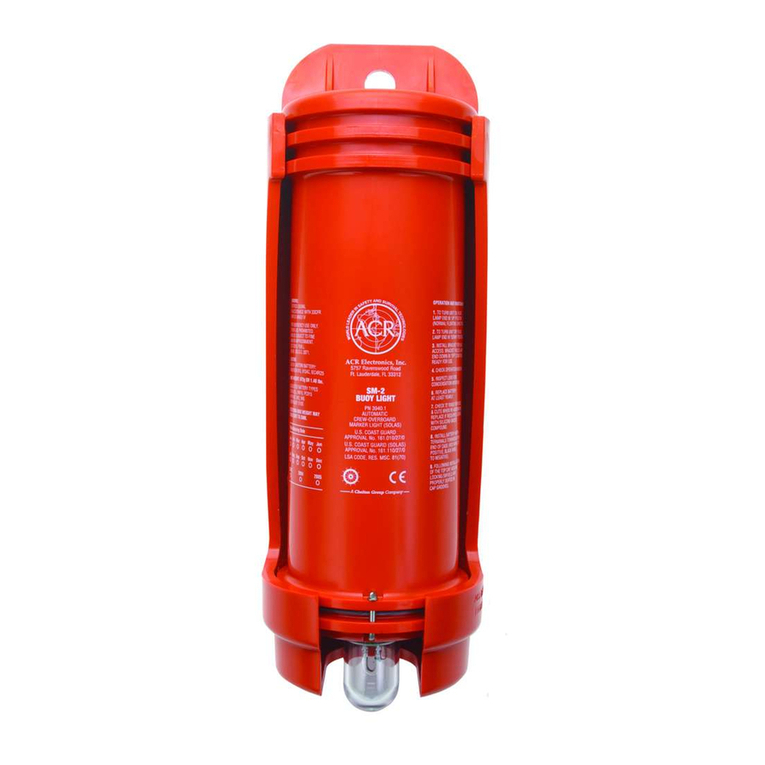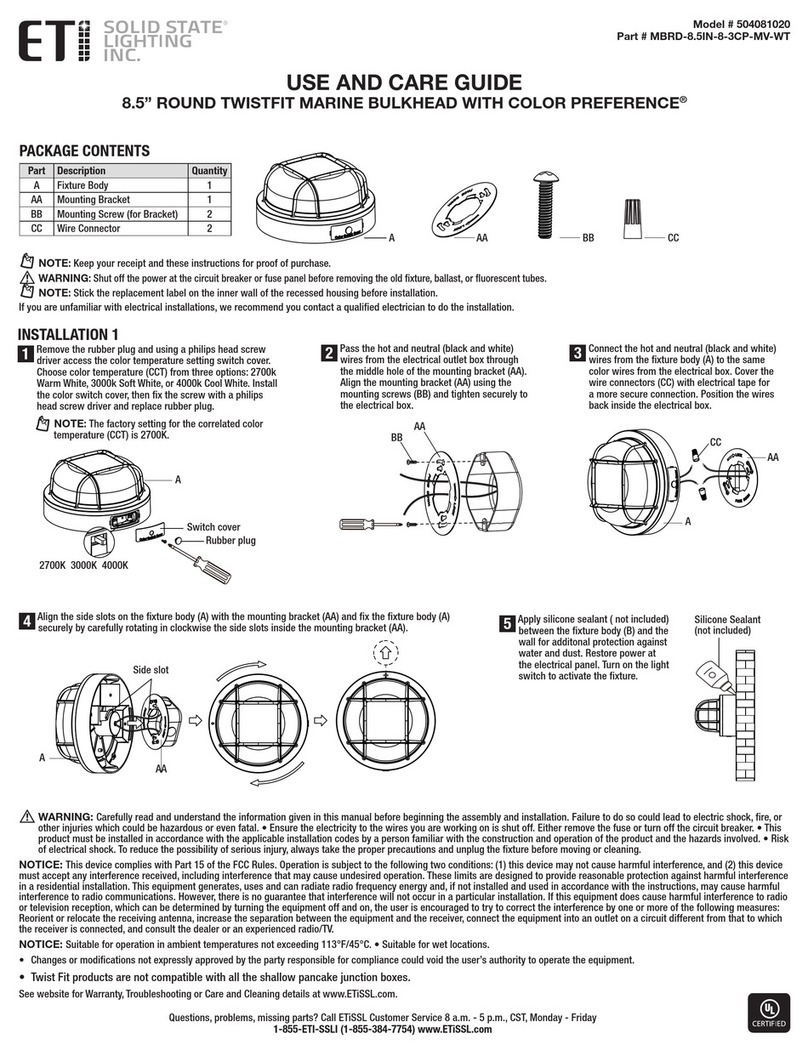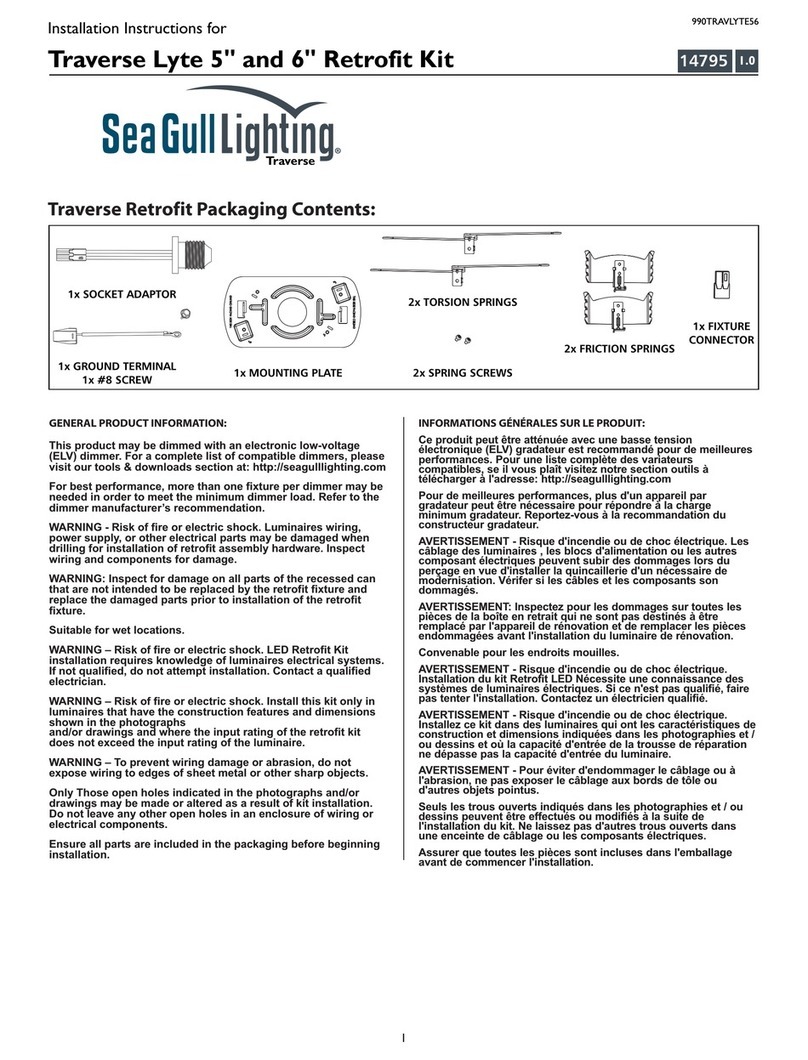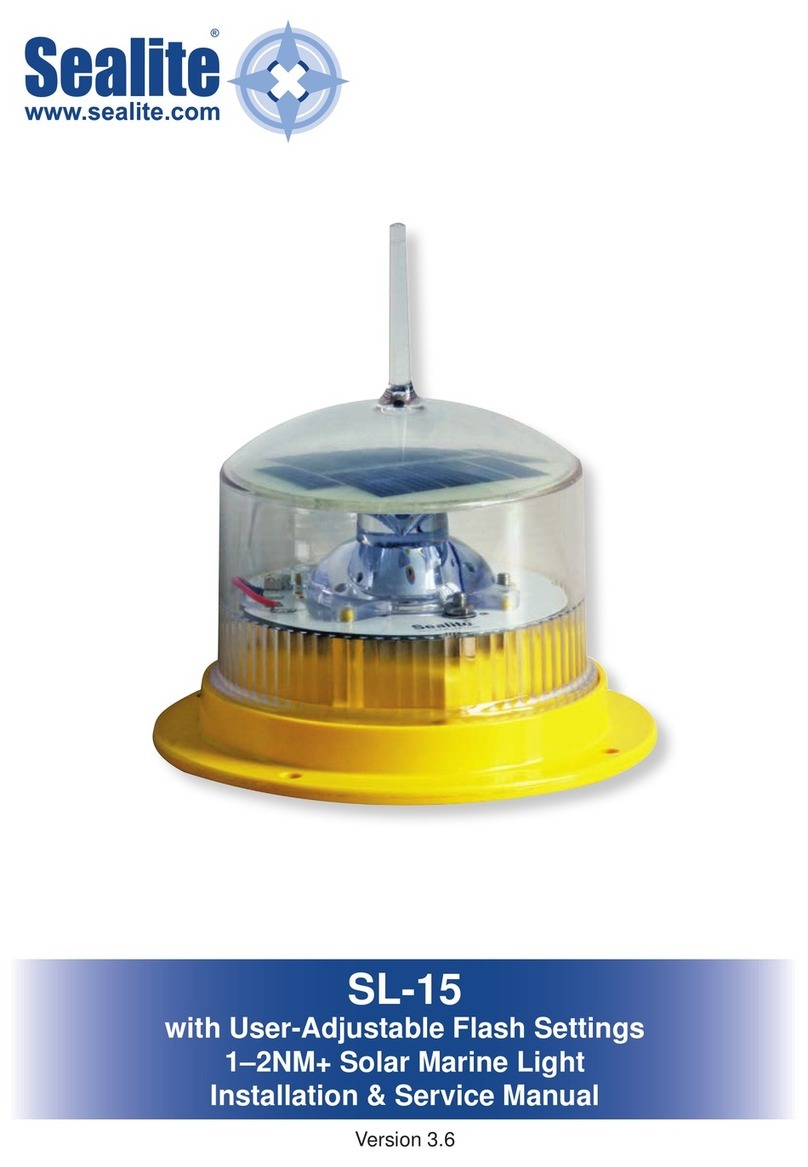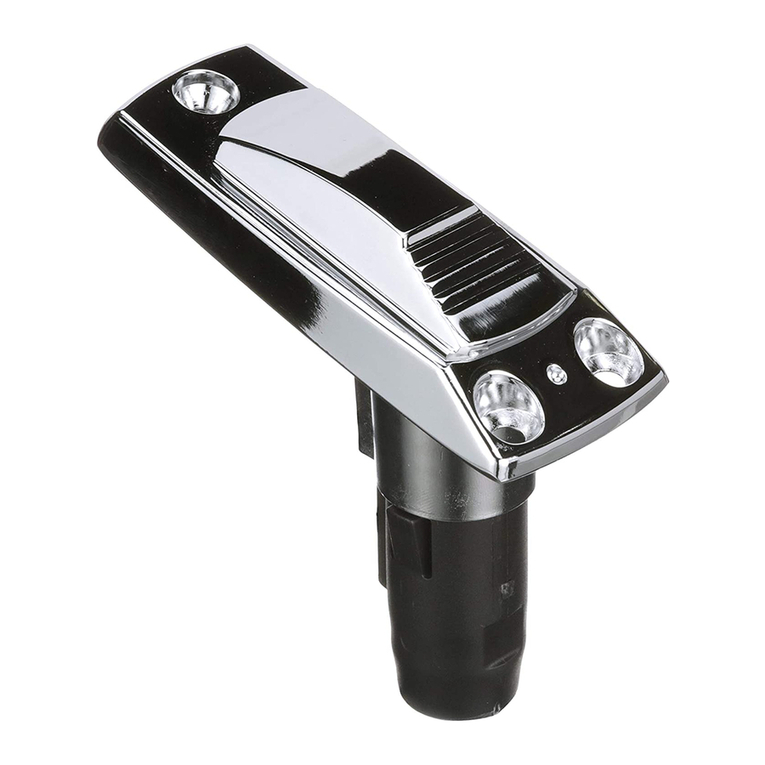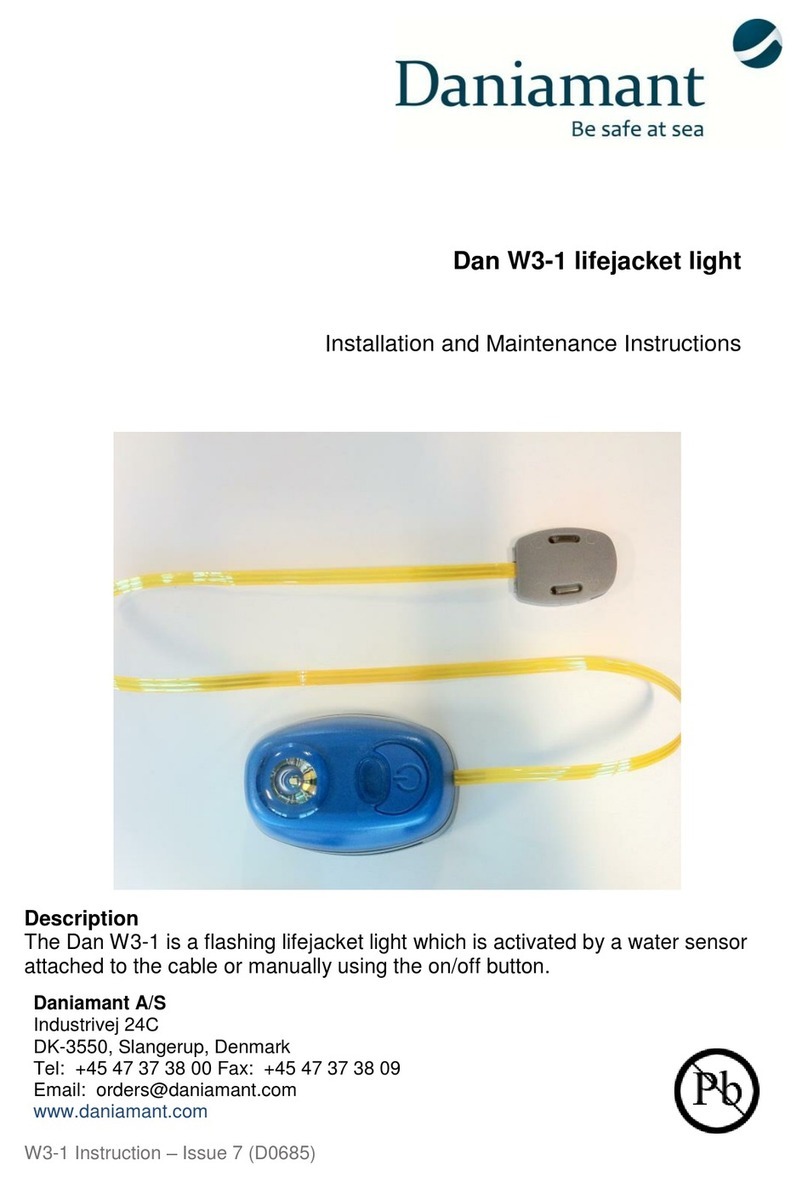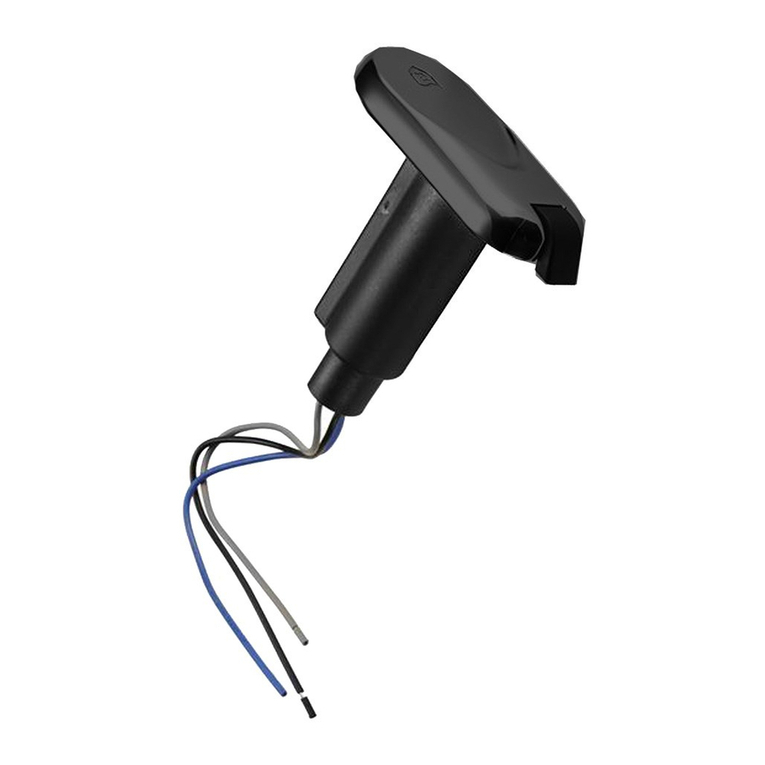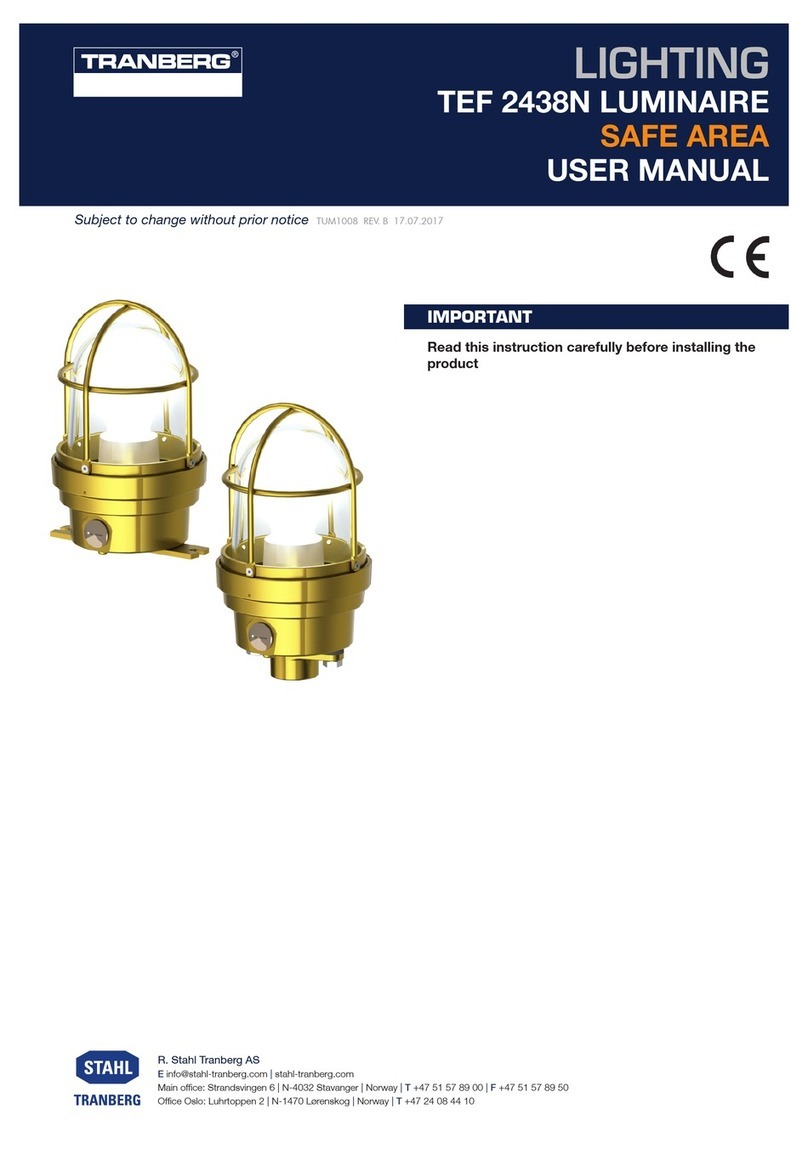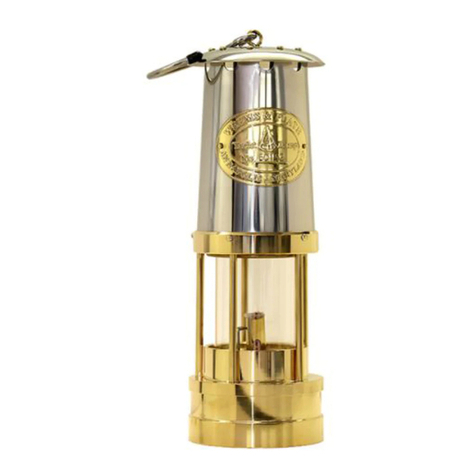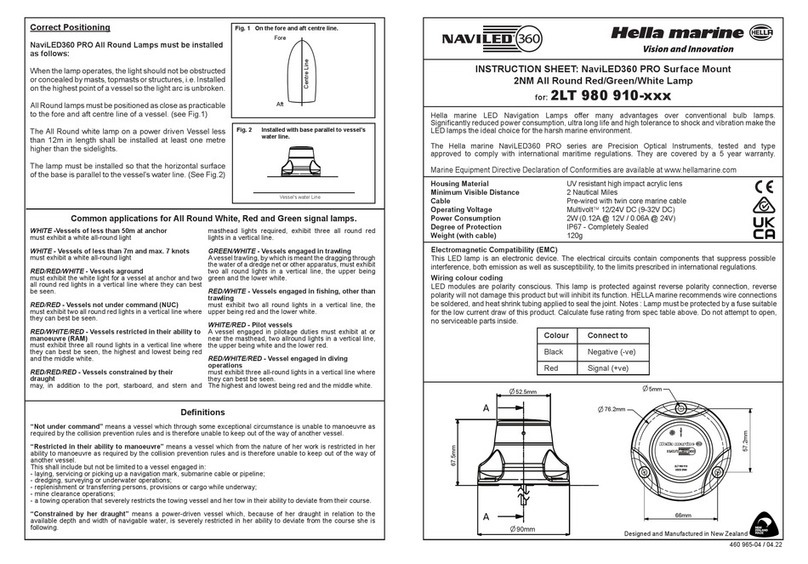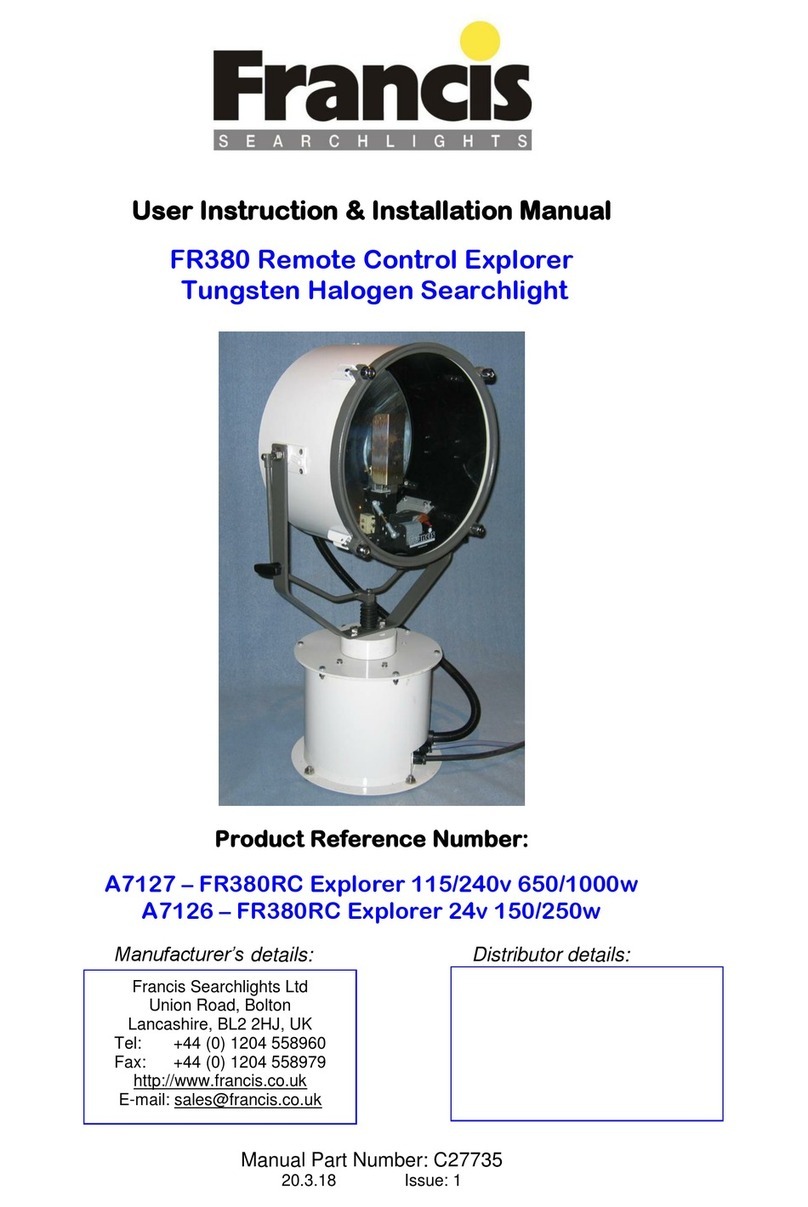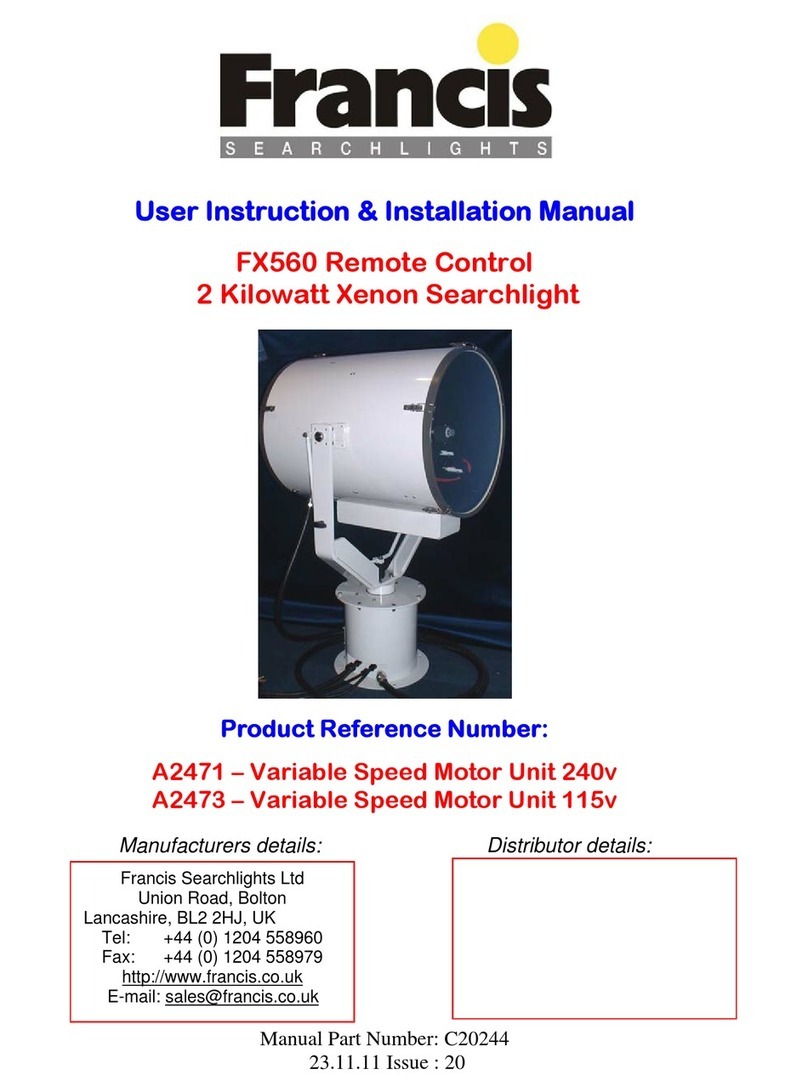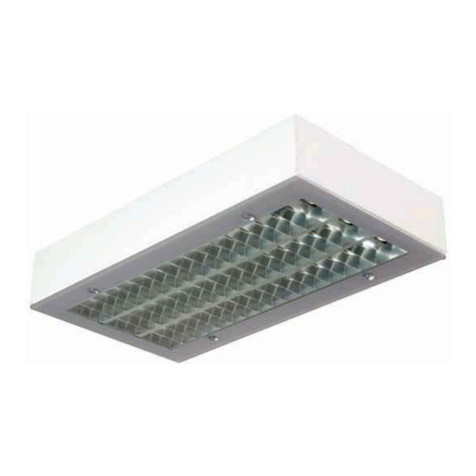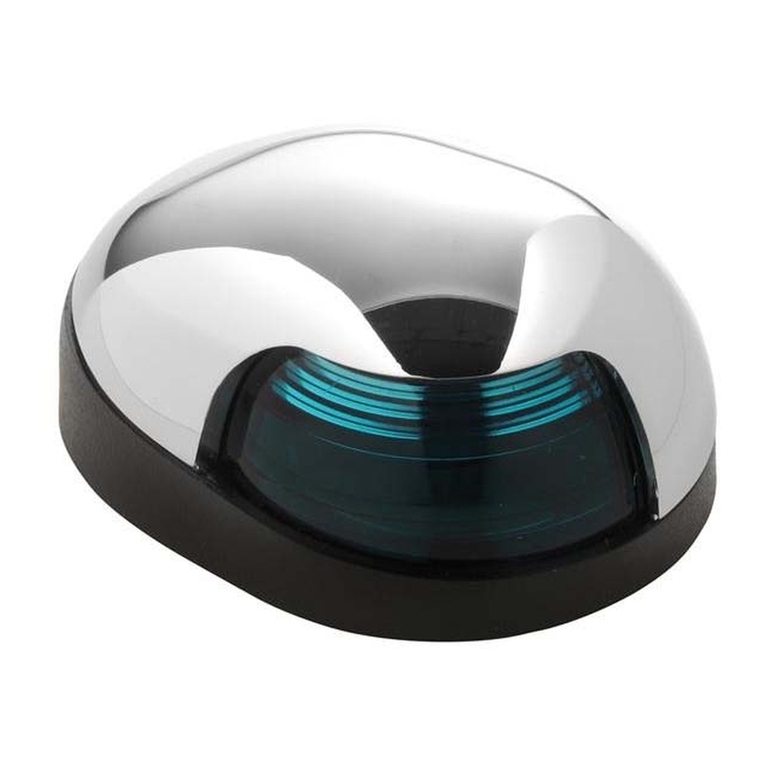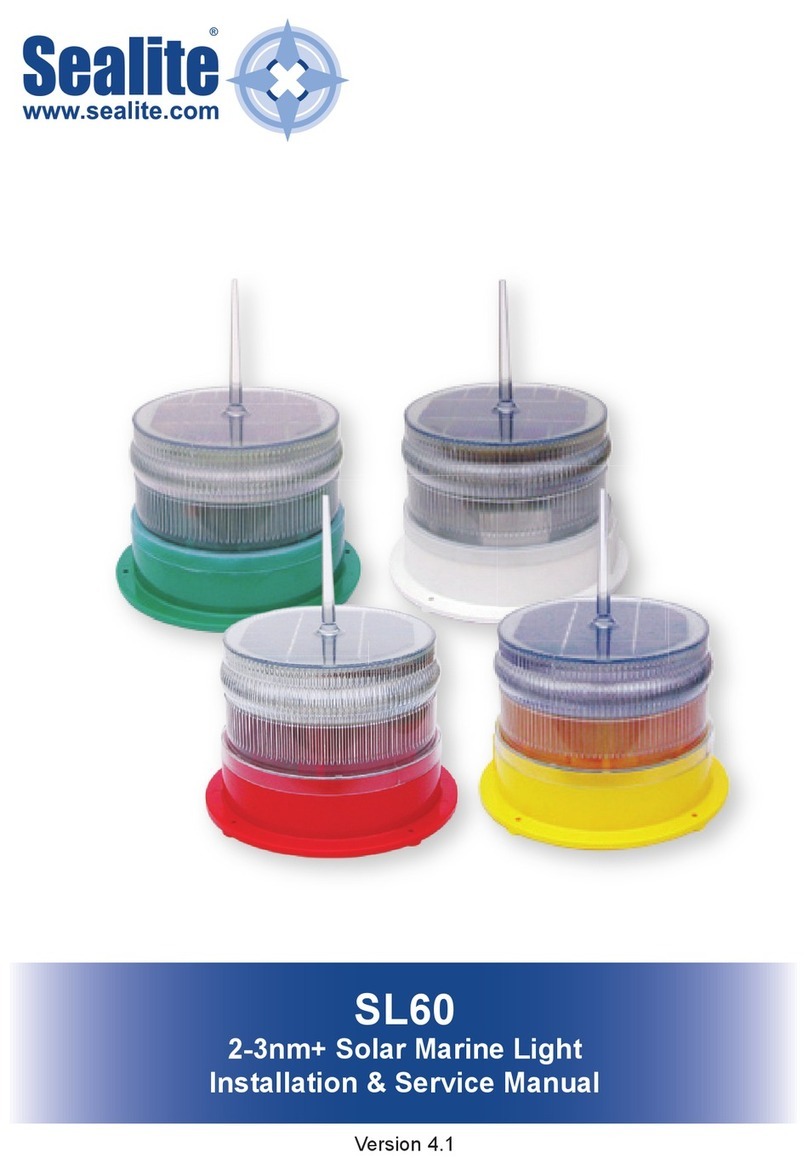6 - Operating Instructions
This equipment is designed for use out of doors, in free air. Never place anything on or cover
the searchlight when in use as this may present a hazard.
The searchlight can be remotely positioned via the joystick control panel, with the facility for
movement up, down, left and right. (See Fig 1 below for aid to instructions)
To operate the panel, press panel button (1), the button will light up & the joystick (4) is now
operational. To switch the lamp on or off press the lamp button (2)
The speed of movement depends on the more pressure applied to the joystick (4) the faster the
searchlight moves. When in the desired position the joystick should be released so that it
returns to dead centre.
On remote focus models the beam of the searchlight can be adjusted to give a variety of beam
types. Using the focus button (3) on the joystick panel, the desired beam can be achieved for
any particular application. The beam will move continuously through ‘spot’ to ‘flood’. In order to
fix the beam type, simply release the focus button at the desired position.
To return the searchlight to Factory set auto home position (forward and horizontal) simply
switch off the joystick panel using the panel button (1) and then press the lamp button (2), the
searchlight will then move to the pre-programed home position.
To set a new Home position, move the searchlight to the desired home position, switch off the
panel (1), move the joystick to the downward position ↓ and simultaneously press the Lamp
button (2).
There is the option for added slave panels, the slave panel has all the features of the main
control panel i.e. joystick, focus and on/off.
When the lamp is switched on, this will illuminate the Lamp button (1) on both the Main & Slave
Control panel, also when the Focus button (3) is pressed, both Focus buttons will be
illuminated.
The brightness of the panel can be increased or decreased by holding the panel switch (1)
down and moving the joystick left and right, left to decrease right to increase.
Fig 1
